Land Invertebrates
Media
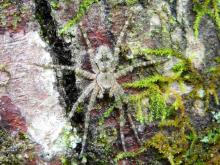
Species Types
Scientific Name
Dolomedes albineus
Description
Whitebanded fishing spiders are often seen on tree trunks, walls, or other vertical surfaces, sometimes far from water. The coloration and markings can vary, but many individuals have an olive-green cast that helps them blend in with mosses and lichens. Note the bristly legs.
Media
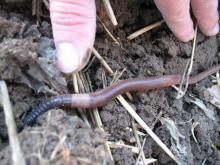
Species Types
Scientific Name
Amynthas and Metaphire spp.
Description
Jumping worms are invasive earthworms that are native to east Asia. They are spreading in North America and cause problems for plants and soils. They thrash violently when disturbed.
Media

Species Types
Scientific Name
About 1,300 species in North America north of Mexico
Description
The longlegged flies are a large, diverse fly family. They often have eye-catching metallic green, copper, bronze, or blue bodies and long legs. Their delicate wings are often clear and look iridescent in bright light, but many species have dark marks near the wing tips.
Media
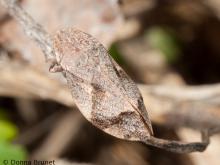
Species Types
Scientific Name
Lepyronia quadrangularis
Description
The diamondback spittlebug is common in weedy areas. The larvae live protected in spitty masses of foam. The adults are drab and well camouflaged, so few people notice them.
Media

Species Types
Scientific Name
Neoscona crucifera
Description
A widespread species, the barn spider commonly builds its webs in woods and on the eaves of barns, houses, and similar structures.
Media
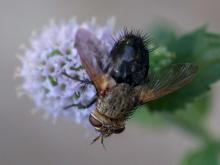
Species Types
Scientific Name
About 1,350 species in North America north of Mexico
Description
Tachinid flies are one of the largest families of flies. They are parasitic flies whose larvae are parasitoids of other insects. They look a lot like house flies, blow or bottle flies, wasps, or bees. Many are very bristly.
Media
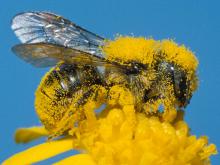
Species Types
Scientific Name
Osmia georgica
Description
The Georgia mason is one of several species of mason bees in Missouri. Like other megachilid bees, it is a native solitary bee that carries pollen in a special clump of hairs on the underside of the abdomen.
Media
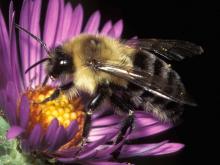
Species Types
Scientific Name
Bombus impatiens
Description
The common eastern bumblebee is widespread in the eastern United States. It is one of several species of bumblebees that occur in Missouri.
Media

Species Types
Scientific Name
Stagomantis carolina, Mantis religiosa, and Tenodera sinensis
Description
Most people recognize mantids, or mantises, when they see them, but it takes more practice to distinguish among the different species of these efficient insect predators.
Media
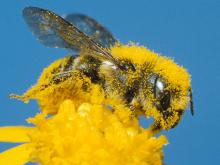
Species Types
Scientific Name
More than 630 species in North America north of Mexico
Description
Megachilid bees are a family of solitary, native bees that carry pollen only on the underside of the abdomen, never on the hind legs. Large cutting mouthparts allow them to collect pieces of leaves, soil, or plant resins to line their nests.
See Also



Media

Species Types
Scientific Name
Cisseps fulvicollis
Description
The yellow-collared scape moth is more often “orange-collared.” And whether you think it looks more like a firefly or a wasp, it’s still a moth!
Media

Species Types
Scientific Name
Nearly 150 species in North America north of Mexico
Description
Slim, delicate plume moths are instantly recognizable by their T-shaped silhouette, long legs, and muted shades of tan and brown. It can be hard to separate the various species.
Media

Species Types
Scientific Name
Pyrrharctia isabella
Description
Not many people know the adult Isabella tiger moth when they see one, but we’re all acquainted with its caterpillar, the woolly worm, or woolly bear.
About Land Invertebrates in Missouri
Invertebrates are animals without backbones, including earthworms, slugs, snails, and arthropods. Arthropods—invertebrates with “jointed legs” — are a group of invertebrates that includes crayfish, shrimp, millipedes, centipedes, mites, spiders, and insects. There may be as many as 10 million species of insects alive on earth today, and they probably constitute more than 90 percent all animal species.





















